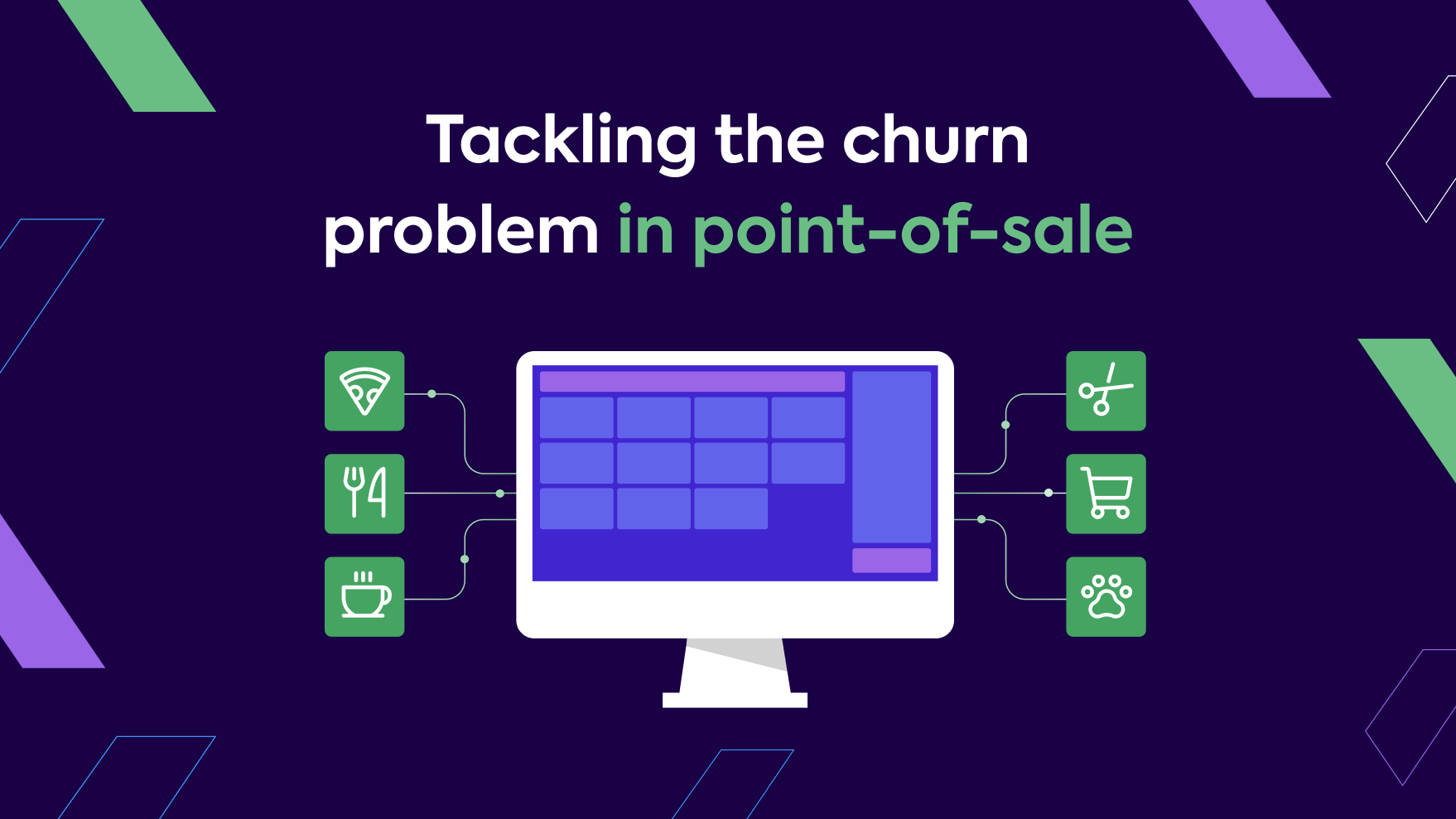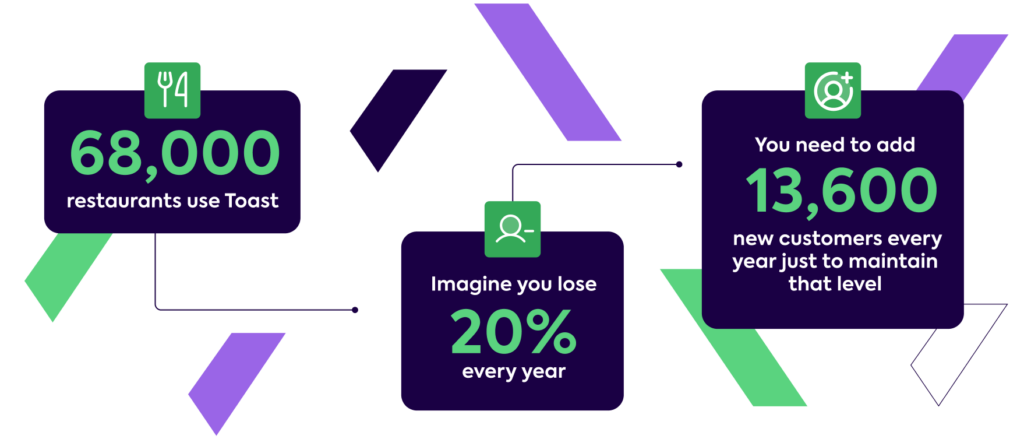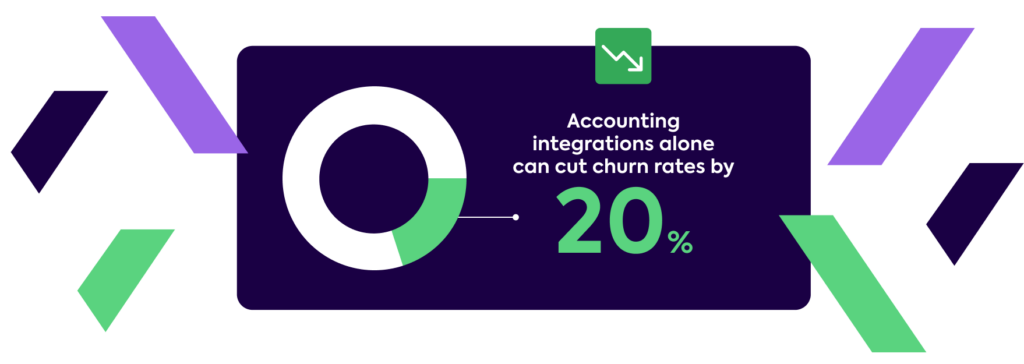
This article was originally published on Finextra.
Every year about 30% of restaurants go bust. The life of any hospitality or brick-and-mortar retail business is usually short, particularly in the small and mid-market segment. Blame high fixed costs, staff turnover rates around 70%, and a fickle customer base. This is doing business on hard mode.
Unsurprisingly then, the hospitality and retail sector is far from a happy hunting ground for builders of technology products. A low-margin customer base means a low-margin business.
Some tech companies have found success providing this sector with payments processing, which in brick-and-mortar retail is integrated with the most important piece of tech on location, the Point-of-Sale (POS) system.
POS system providers have historically been resigned to high customer churn, especially as most of this churn is “involuntary” (merchants going out of business). However, as POS systems expand across a wider range of business processes and become more central to their customers’ operations, some are starting to find ways out of this decades-old bind.
Case study: Toast
The biggest POS success story in recent years is Toast. Founded in 2011, Toast’s IPO in 2021 valued the business at $20 billion (since down by half). The restaurant POS and management system is ranked #1 in its category by G2. Users rave about its ease of use. Combine this with competitive pricing and no upfront fees and you see why Toast has grown so quickly.
Most of Toast’s revenue to date has come from payments. For all the payments processed by Toast customers, Toast takes around 2.5% in fees. However, while payments are a reliable cash cow, a growing portion of Toast revenue stems from the software subscriptions generated by its range of restaurant management features.
Toast wants to be an “end-to-end platform” for restaurants, providing everything a proprietor needs to run their business in one place. This means managing inventory, ordering from and paying suppliers, paying staff and scheduling their shifts, integrating with online ordering platforms, and even accessing working capital.
Toast has invested in building a broad platform from the start because without a diverse range of revenue streams there is a cap on how successful a POS business can be. This is because POS providers experience high customer churn. While numbers vary based on the profile of the customer base, it’s not unheard of for POS providers to lose around 20% of customers every year.
POS providers do their best to limit “voluntary churn” with long contracts. However, regulators are cracking down. From January 2023, the UK’s Payment Systems Regulator will require contracts for card readers to be no longer than 18 months. Regardless, most of this churn is involuntary. Customers go bust.

With Toast’s customer acquisition cost of $9,500, that means sinking an annual $129 million into Sales and Marketing before you spend anything on growth.
Each customer costs more to acquire than the last, so to keep spending to grow you need to keep customer lifetime value high. That is where you run into a problem. Payments processing is effectively commoditized. Toast’s payments take rate of 2.5% is pretty much the same as competitors like Square.
A successful POS business needs to prioritize finding and retaining valuable customers, (e.g. those who process the most payments or who live longer than the restaurant average of 3.5 years) and building additional revenue streams.
I don’t want to be your POS system, I want to be your everything system
Leading POS providers like Toast, Clover, Square, Lightspeed, PayPal (Zettle), and more are trying to break into the popular B2B fintech game of “build the complete operating system” for merchants. Becoming entrenched in customers’ core business processes is a better way to reduce voluntary churn than long contracts and creates more opportunities to add and capture value.
The key to success in this game is identifying the most important sites of business activity, discovering where you can displace incumbent products, and integrating the rest. That last point is key. If there is one thing happy POS customers mention as much as ease of use, it is integrations.
Integrations are in fact so important for POS users that Hospitality Tech’s 2022 POS trends report found that “integrations with other systems are driving POS purchase decisions for 86% of restaurants and POS upgrade decisions for 46%.”
Some merchants choose to use POS software and payment processing from two different providers, e.g. they might integrate their Zettle terminal with a Tabology POS. However this form of integration is declining in importance as both vendors and merchants increasingly prefer bundling payments processing and POS software together. Adyen and Shift4 for instance both launched integrated POS products this year.
You can always count on accounting
There is one crucial category of integration that payments and POS businesses have no interest in trying to build and displace – accounting. There is a clear merchant need. Keeping up-to-date and accurate books can be the difference between a well-run business and a basket case.
This is why accounting integrations not only help POS providers become more deeply embedded in merchants’ core business processes but also indirectly act as a selection process for businesses that are more likely to last. If the bulk of POS churn is merchants going bust, knowing how to focus on serving and retaining the merchants with higher lifetime value is almost like magic.
Our data shows that accounting integrations alone can cut churn rates by 20%. The number may not sound huge but it has compound benefits over the long-term. With lower churn, POS platforms have a higher ceiling on their growth before low-margin payments revenue is not enough to outstrip acquisition cost.

By retaining well-run and more robust merchants, customer lifetime value increases. Additional products see greater adoption and higher-margin software subscriptions revenue rises. The merchants who need accounting integrations the most tend to have more complex bookkeeping requirements because they process more transactions often across multiple locations. This is a high-value customer cohort.
Accounting integrations also provide one major ancillary benefit – permissioned access to customer data. By giving customers a good reason to connect their accounting to their POS platform, the POS platform internalizes more data about their merchant. As the single source of truth for cash flow, assets, and liabilities, accounting data is like gold dust to underwriting and can even be used proactively to identify requirements for working capital.
Benefits like this are increasingly valuable to large POS providers. Where the largest players have traditionally grown through acquisition of smaller competitors, they are now looking towards horizontal expansion.
Fintech infrastructure providers are making it easier than ever for POS providers to capitalize on their position as the central operating system for merchants. The costs of embedding new products and establishing new revenue streams are falling. Adoption of this alternative growth model will only accelerate as traditional payment processing income streams come under pressure from open banking and other innovative new payment rails.
Learn more
Codat works with a wide range of POS providers, like Zettle by PayPal, Lightspeed, and Phorest, helping them reduce churn and build new revenue streams.
Our product for POS accounting automation, Sync for Commerce, processes millions of transactions every day, neatly syncing them with bookkeeping software like QuickBooks and Xero. This product and the features that our clients have built with it save merchants hundreds of thousands of hours every year.
To learn more about our solutions, sign up for a free account or get in touch with a Codat specialist by filling out the form below.
